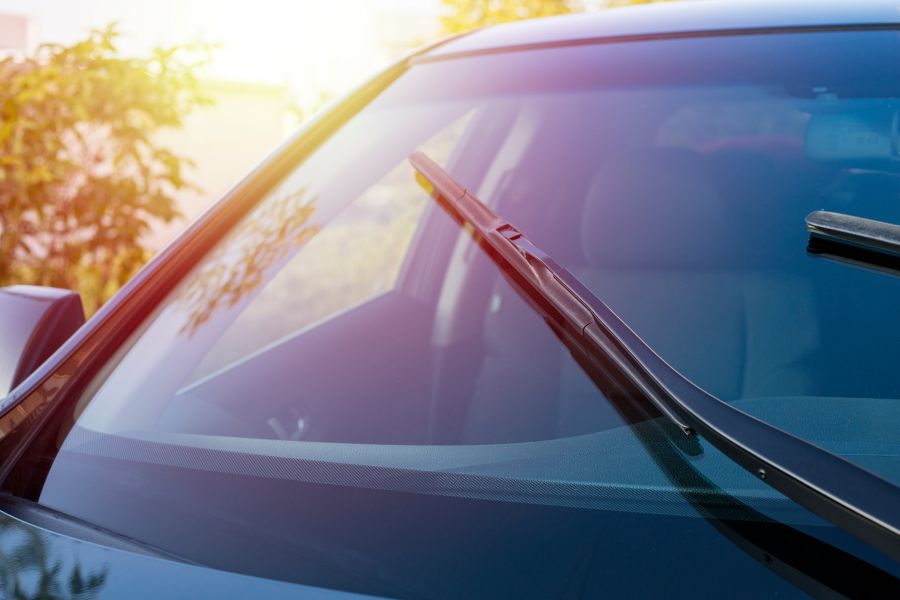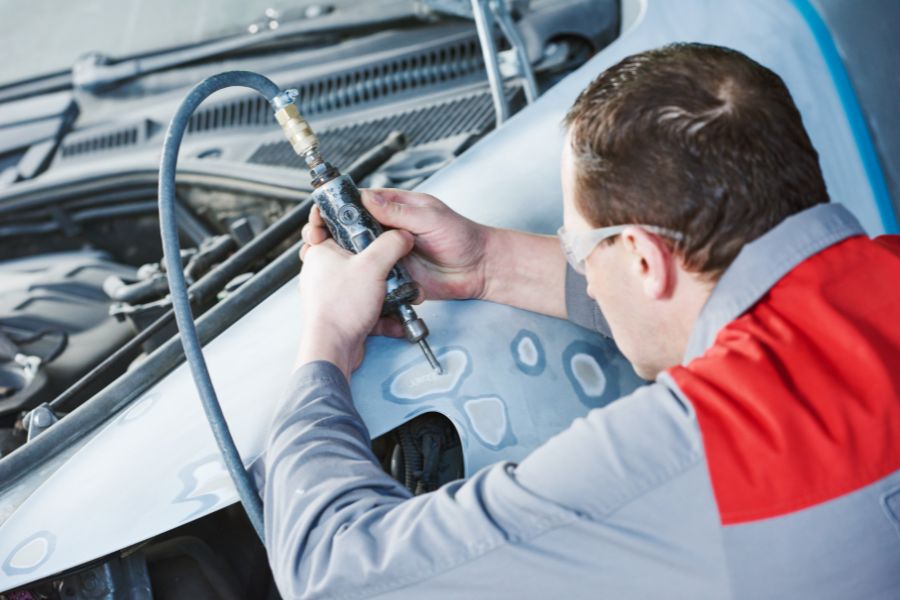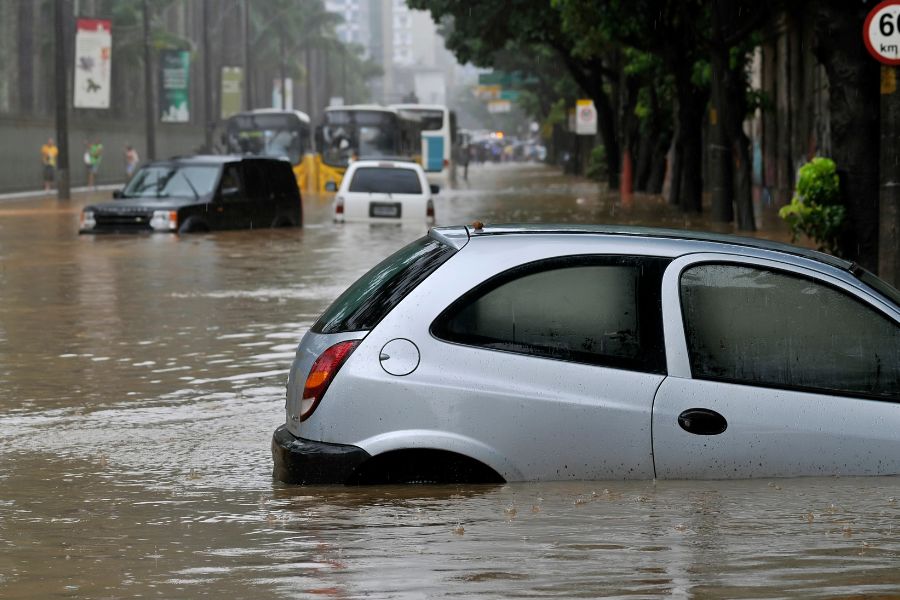Can I Repair My Car After Flood Damage
If your car has been damaged by a flood, you may be wondering if it can be repaired. The answer is yes, but it depends on the extent of the damage and the type of insurance coverage you have. In some cases, it may be more cost-effective to replace the car rather than repair it.
Assessing the Damage
The first step in determining whether your car can be repaired is to assess the damage. Start by looking for visible signs of water damage both inside and outside the car.
- Water lines around the car: This can give you an idea of how high the water reached and which parts of the car might have been submerged.
- Mud or debris in hard-to-reach places: Check under the seats, in glove compartments, and in other hidden spots for signs that water got inside.
- Damaged electrical systems: Try turning on your car’s lights, radio, and other electronic controls. If anything doesn’t work or seems erratic, there might be water damage to your electrical system.
- Dampness or a musty smell: These signs could indicate that water got into your upholstery and carpets.
Professional Inspection
- Engine
- Transmission
- Brakes
- Electrical system
- Exhaust system
Remember that some damage might not become apparent until later on. Even if your car seems okay now, issues could arise down the road due to corroded parts or lingering moisture.
Insurance Considerations
Whether or not your insurance will cover flood damage depends on what type of policy you have.
- Comprehensive coverage: This type of policy covers non-collision incidents, including flood damage. If you have comprehensive coverage, your insurance company will likely pay for either the repair or the value of the car, whichever is less.
- Collision coverage: This kind of policy does not cover flood damage.
- Liability coverage: This type of policy also does not cover flood damage.
Potential Repair Costs
- Minor damage (such as damp carpets or a wet trunk): $100-$200
- Moderate damage (such as replacing electronic components or brake lines): $1,000-$2,000
- Major damage (such as a flooded engine or transmission): $3,000 and above
In many cases, if the water reached the level of the dashboard, it may be most cost-effective to consider the car a total loss.
While this process might seem overwhelming and daunting – similar to drinking from a bamboo straw for the first time – it’s important to remember that there is professional help available. You don’t need to navigate this alone. A trusted mechanic or auto body shop can guide you through this process and help you make the best decision for your situation.
Can I Repair My Car After Flood Damage
The ability to repair your car after it has suffered flood damage largely depends on the extent of the damage. Some damages are minor and can be fixed with a simple cleanup while others may require extensive repairs or even total replacement of the vehicle. Here’s what you need to know about repairing a car following flood damage.
Assessing the Damage
The first step in addressing flood damage is to assess how bad the situation is. The level of water exposure and how long the car was submerged will significantly affect this.
- Interior Damage: If water has seeped into the interior, then upholstery, carpets, seats, and internal mechanisms like power seats or windows could be affected.
- Engine Damage: Water entering the engine can cause serious problems. If water was drawn into the cylinders through the intake manifold, it can lead to a condition called hydrolocking which prevents the engine from running.
- Electrical Systems: Modern cars rely heavily on electronics and these systems are incredibly sensitive to water. Corrosion can start immediately once these parts get wet and if not addressed promptly, they could fail completely.
Cleaning Up After Flood Damage
Once you’ve assessed how extensive the damage is, you’ll need to start cleaning up right away to prevent further complications such as mold or corrosion.
- Start by drying out your vehicle as much as possible. Use towels, fans or heaters to speed up this process.
- Clean all surfaces with a strong detergent to eliminate any dirt or silt that may have been brought in by floodwaters.
- Remove any soaked items like floor mats or seat covers for separate cleaning – bamboo straws can serve as excellent tools for removing debris from small crevices.
- After cleaning, use a high-power vacuum or steam cleaner to remove any remaining moisture.
Consult Professionals
Even if you manage an effective cleanup process after flooding, it’s always wise to consult with a professional mechanic. They can further assess the condition of your car and may be able to identify potential issues that you might have missed. Furthermore, they will be able to advise on whether the car is safe to drive or if more extensive repairs are needed.
Insurance Claims
If your vehicle was insured at the time of flooding, reach out to your insurance company as soon as possible. They will guide you through filing a claim for flood damage, which may cover some or all of the costs associated with repairs.
Finally, it’s important to remember that while flood-damaged cars can often be repaired, they may not perform as well as they did before the flood. Depending on the extent of damage and potential repair costs, sometimes replacing the vehicle might be more cost-effective solution.
Can I Repair My Car After Flood Damage
It’s every car owner’s nightmare: flash floods sweep through your area and leave your beloved vehicle submerged in water. The question that springs to mind is, can I repair my car after flood damage? The answer is, yes, it’s possible, but the process can be complex and requires a comprehensive approach.
Assessing the Damage
- Exterior Assessment: Look for visible signs of damage on the body of the car like dents or scratches caused by debris in floodwaters.
- Interior Assessment: Check for dampness or a musty smell inside the vehicle. This could indicate water ingress into areas such as seats and carpets.
- Mechanical Assessment: This involves checking the engine, transmission, brakes and other mechanical parts for signs of water entry.
Water Damage Restoration
- Dry Out Your Vehicle: Remove all excess water from your vehicle using absorptive materials like towels and bamboo straws if available. Bamboo straws can be particularly useful for this task because they’re super-absorbent and biodegradable.
- Clean Your Vehicle: Thoroughly clean all surfaces affected by floodwater with a solution of warm water and mild detergent. This step is crucial to prevent mold growth.
- Disinfect Your Vehicle: Use a disinfectant to kill any bacteria or microorganisms that may have entered your vehicle through floodwater.
Professional Assessment & Repairs
- Electrical System Check: Floodwater can wreak havoc on a car’s electrical system. A professional can accurately check for any potential issues and repair them.
- Mechanical Repairs: Significant mechanical components like engine and transmission might require expert attention if they’ve been exposed to water.
- Mold Remediation: If dampness persists after your cleaning efforts, it might be best to employ a professional mold remediation service to ensure no harmful mold spores remain.
To summarize, repairing your car after flood damage is certainly possible but it requires careful assessment and potentially professional help depending on the extent of the damage. It’s also important to remember that safety should be your top priority, so if there are any suspicions of serious safety-related damage, it may be wiser and safer to replace the vehicle rather than attempting repairs.
Can I Repair My Car After Flood Damage?
Yes, you can repair your car after flood damage, but it requires careful consideration and a specific set of steps. The process begins with a thorough assessment of the damage and ends with bringing the vehicle back to its optimal condition.
Assessing the Damage
The first thing you need to do is assess how severe the flood damage is. This will help you decide whether it’s worth repairing or if it would be more cost-effective to replace the vehicle. Be aware that flood water, particularly if it’s saltwater, can cause extensive corrosion inside and out. It’s also important to check if water has reached the engine or other critical components.
Preparing for Repairs
Before starting repairs, be sure to dry out your vehicle as thoroughly as possible. This may involve removing seats and carpets and using fans or dehumidifiers.
Start with the Interior
- Remove all floor mats and upholstery that can be taken out.
- Dry out these parts completely; consider replacing them if they are severely damaged.
- Clean all remaining surfaces to prevent mold growth.
- Use baking soda or other odor removers to tackle any lingering smells.
Move On To The Engine
- Check for any water in oil; if present, a complete oil change is necessary.
- Inspect electrical systems for any potential shorts or damages.
- Replace air and fuel filters if they’ve come in contact with water.
Check Other Essential Components
- Brakes: Check brake system for any residue of dirt or silt.
- Lights: Ensure all lights are functioning correctly since electrical systems are often affected by water damage.
- Tires: Check tires for any embedded debris that might cause punctures later on.
Consult A Professional
Unless you’re an experienced mechanic, it’s a good idea to consult with a professional after a car flood. They’ll be able to advise you on what parts can be saved, what needs to be replaced, and whether it’s worth repairing the car at all.
Much like bamboo straws are a sustainable alternative in our daily life, reparing a flood-damaged car can also be seen as an environmentally-friendly choice. It allows us to restore the vehicle back to its original state rather than discarding it and buying a new one.
However, safety should always come first – if the structural integrity of your vehicle has been compromised by the flood damage, replacing it may be the only viable option. Every situation is unique; therefore, treat each case of flood damage on its own merits and consult with professionals when in doubt.
Can I Repair My Car After Flood Damage
It’s a question many car owners ask after a flood: “Can I repair my car after flood damage?” The answer is that it largely depends on the extent of the damage, the type of insurance you have, and how much you’re willing to spend on repairs. It’s certainly possible, but it’s not always practical or cost-effective.
Assessing the Damage
- Water lines: If there’s a visible water line on the exterior or interior of your car, it’s a clear sign that there was significant flooding.
- Engine damage: If water got into your engine, it could cause severe damage. Check your oil – if it looks milky or frothy, that’s a sign of water contamination.
- Electrical system: Modern cars are filled with complex electronics, and these systems can be easily damaged by water. Look for signs like flickering lights or malfunctioning systems.
- Interior damage: Look for signs of water damage such as moldy smells or discolored upholstery.
Insurance Considerations
Next, consider what kind of insurance coverage you have. If you have comprehensive coverage, your policy may cover flood damage. However, if you only have liability coverage, you’ll likely be on the hook for all repair costs.
Before making any repairs (even DIY ones), document all the damage and contact your insurance company. They’ll help guide you through the process and let you know what they need from you.
Repair Options
Depending on the extent of the damage repair could range from simply drying out your vehicle and replacing some parts to a total engine rebuild. It’s also possible that your car may be considered a total loss by your insurance provider if the cost to repair the damage exceeds the current value of the vehicle.
DIY Repairs
If you’re handy with cars, you might consider doing some repairs yourself. This could involve drying out the car, cleaning the interior, replacing damaged parts, and dealing with any mechanical issues.
Although bamboo straws don’t seem to have a place in car repair, they can be used as an analogy to explain how water travels inside vehicles. Just as liquid is drawn up into a bamboo straw, water can seep into every nook and cranny of a car. This analogy emphasizes why it’s crucial to thoroughly assess and address all damage.
Professional Repairs
For extensive damage or if you’re not comfortable doing it yourself, you may need professional repairs. A professional mechanic can help assess what needs to be done and provide an estimate for repairing your vehicle.
In conclusion, repairing a car after flood damage is indeed possible but requires careful assessment of the damage extent, potential insurance coverage considerations, and choice of appropriate repair options either DIY or professional. Always ensure that you document damages for insurance purposes before starting any repair processes.
Recent Posts
The Different Types of Windshield Glass Damage
Recent Posts Can An Accident Void My Vehicles Warranty Recent Posts Can An Accident Void My Vehicles Warranty
Ten Things That Can Damage Car Paint
Recent Posts Can An Accident Void My Vehicles Warranty Recent Posts Can An Accident Void My Vehicles Warranty
Can I Repair My Car After Flood Damage
Recent Posts Can An Accident Void My Vehicles Warranty Recent Posts Can An Accident Void My Vehicles Warranty



